Find a Focus for Your Art
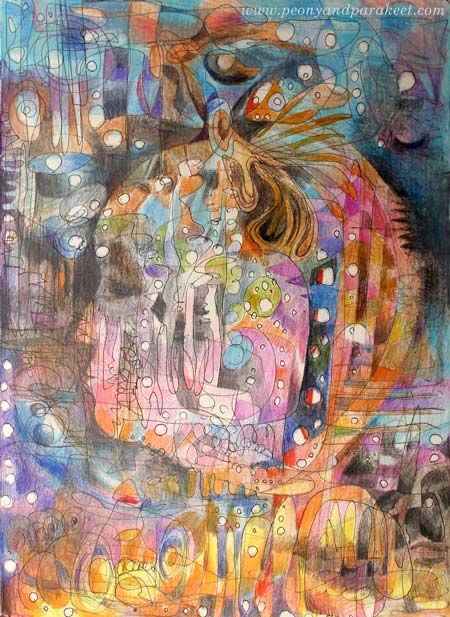
Here’s my latest art journal page with colored pencils. It is called “I Am Listening.”
Drawing Process
I knew that it would be a good moment to create art when I heard about a live broadcast of an opera La Traviata. To enhance the atmosphere, I adjusted lighting and closed sliding doors in the room where I was creating.

When I started drawing, I had no idea what the final result would represent.
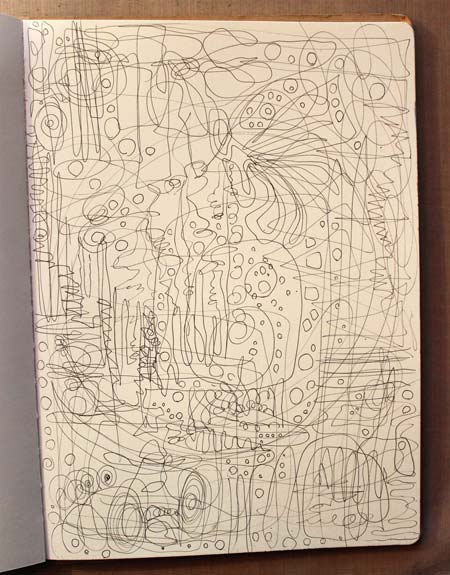
And even when I began coloring the page, I had no clue.
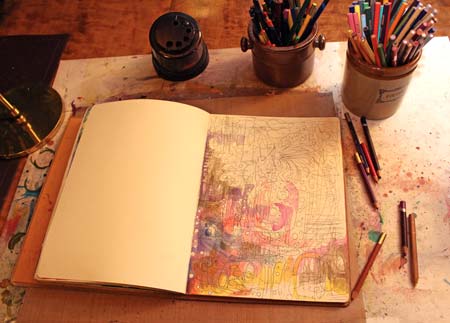
But once I had worked for a while, I saw the face appearing on the page. Soon I knew that the drawing would be about listening to music and how it activates the whole brain. I have experienced that personally, but Finnish researchers have proved it scientifically too.

Focus Sets You Free!
I used to hate people who repeated: focus, focus, focus! I questioned back: “Isn’t experimenting an essential part of creating art? Shouldn’t art set us free, instead of steering us to a narrow path?”
But after finding my focus, I realized that I had had misconceptions. The focus should not be a single subject like “birds” or “faces,” certain supplies like “acrylics” or certain style like “cubism”. The focus should not come from outside, but inside. It should answer the question: “When thinking of self-expression, where are you best at?” This kind of focus will lead you to see more possibilities. You will experiment more and you will broaden your perspective.
I did not mistakenly listen to dramatic music in the suitable surroundings. I used it as a tool to bring out where I am best at – visualizing experiences, systems, and transformations. That’s my focus. Whatever I doodle, I can feel free as I do not have to worry about what will appear. My focus will feed my subconscious and my imagination.
For some of my students, the focus has been “feelings in relationships”. For some, it has been “fairy tales” or “mysteries.” Some have been skillful in seeing “the beauty of everyday life,” others thrive on “atmospheres of dimensional spaces.”

Subscribe to my weekly emails – Get a free mini-course!
Overcoming Predujices: Small Change, Big Results
Sometimes it seems that big life-changing thoughts do not happen. But when looking back, there can be little things that we have almost forgotten. That moment, when you did something differently, opened the door that you normally would not open – that can be the trigger for new kind of inspiration. Here’s my story about a small unselfish act that has given me a lot of artistic inspiration, and made me overcome some prejudices.
You can also read this story in a written form at Medium.com!
Subscribe to my weekly emails – Get a free mini-course!
Art Is Freedom

After working against deadlines and taking care of finishing touches in the recent projects, I got a strong urge to experience and express freedom. So I decided to stretch my style by painting something that would not be so detailed. No pens this time, just acrylic paints.
Freedom for the Left Brain
I always get clarity by organizing. This time, I felt I needed to re-organize my working area. I removed storage boxes from the table and picked up only those supplies I was going to use.
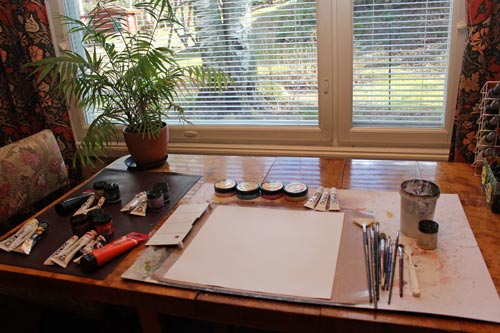
Notice the grouping of paint tubes! I spent a lot of time putting each in their place.
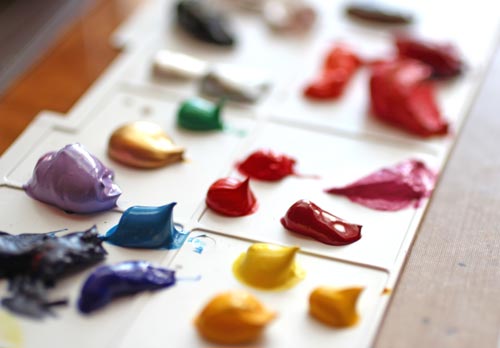
I carefully squeezed each tube of paint to have all the colors ready to be mixed. While doing that, I thought: “THIS is freedom!” Taking time, working slowly, isn’t that the greatest luxury?
Freedom for the Right Brain
I turned the music on. The blank canvas paper was quickly filled with muddy colors. Then I took a sponge and made long strokes. Following the music is a quick way to get the creativity going.
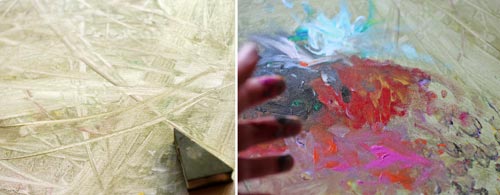
Next, painting with fingers! No boundaries, getting messy, what a great feeling! After a while, I was ready to continue with the brushes.
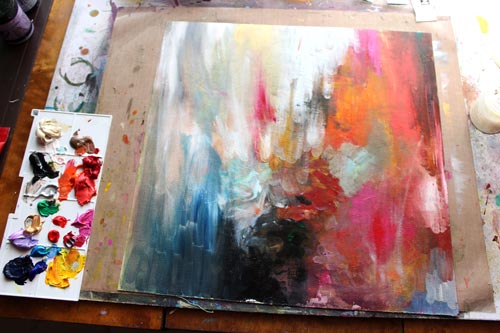
Freedom can be experienced in many ways. This is what I often follow: Setting up the rules, then breaking them, then acceptance. In the last phase, whatever comes on canvas is okay.
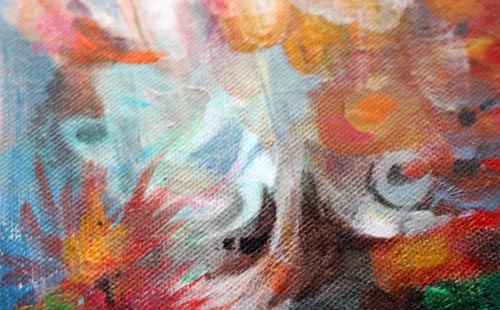
If I listen to music, the painting will often change as the song changes. As a teenager, I used to play the same song all over again to maintain the style of the painting (must have been an agony for the rest of the family to listen to that same song for hours!) Nowadays, it is only exciting to see what will follow when the rhythm changes.
Tips for Freedom
My tips for experiencing freedom:
1) Once you start to paint, instead of gathering all the art supplies, limit what you will use. Think: “These are the only supplies that I have.” Even if it is not true, it will make the commitment stronger.
2) Listen to the music you have not heard before. It takes you off from routines. You can also play a mixture of songs that are all different and new.
3) Observe your thoughts while painting. Those crazy ideas that you normally kill – let them live this time! Be aware that your most intuitive thoughts come up and disappear quickly. Practice self-acceptance so that you will notice them!
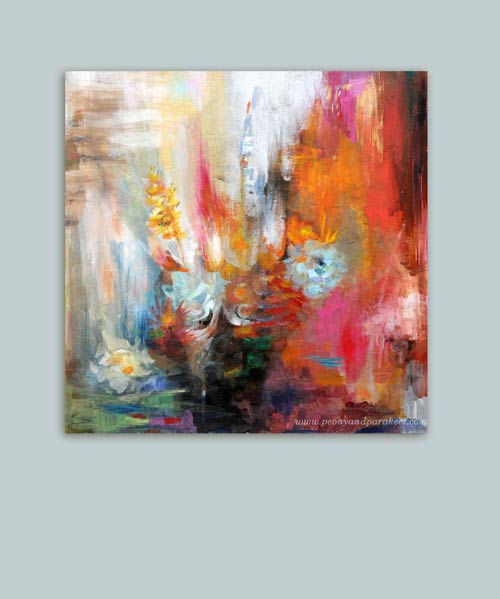
Subscribe to my weekly emails – Get a free mini-course!
Light, Water and Fire
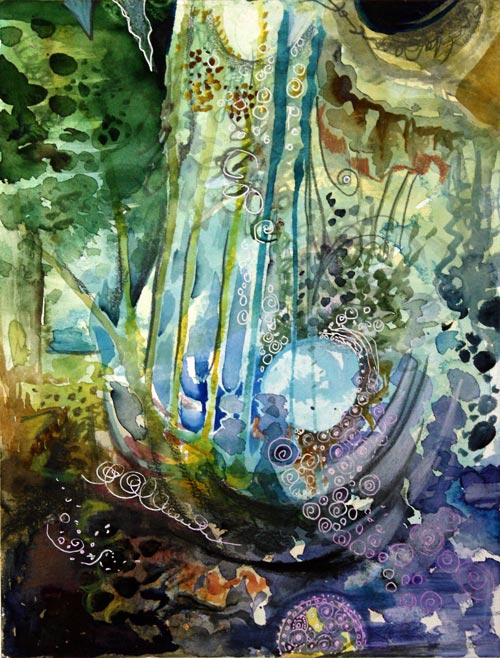
This watercolor painting is one of those I made for the video Watercolor 101 for Intuitive Painting. The painting uses the techniques presented on the video, so I won’t publish phase photos this time as they are on the video. Buy the video and you’ll learn the techniques!
This blog post is about doubt – the doubt that all the beauty you can create in your art does not really exist. Who cares? Well, at least I do. To be exact, a part of me does. Besides design, I have a degree in computer science and sometimes I can be an overly organized and analytical person. So, there’s a little engineer in me who always questions what I am doing. I call her “he” here, just to separate the little engineer from the little artist (the artistic side of me) easily.
When she showed him the watercolor painting, the little engineer said:
– “Ok, but can this really exist?”
– “Well, it’s an intuitive painting expressing how I see the music”, she answered, feeling a bit offended.
– “It is called Graceful Aria”, the little artist continued.
– “I just see some kind of landscape there”, he said. “It makes me wonder if that kind of landscape could really exist.”
– “I don’t think the landscape is important here. If you want to grab something concrete, you should look for the light and water. This painting focuses on them.”
– “This is just the kind of dreamy thoughts from you, that I do not understand. I just see trees, mud and some sky. But to be honest – if you want to paint trees, mud and sky, you could do a better job there.”
The little artist gritted her teeth. But then she realized she could actually show the connection of light and water. Namely, the little engineer had filed all her photographs so that it would be really quick to find the nature’s wonders she had documented while the little engineer had controlled the leashes of the dogs.
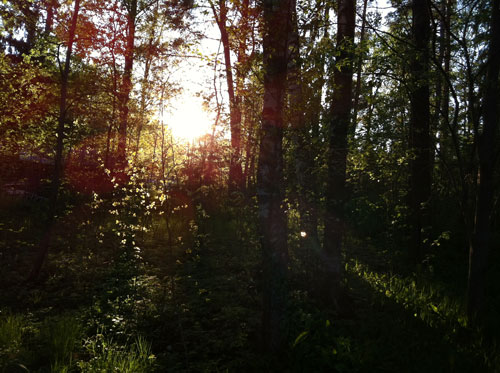
“Remember this evening?”, she asked. “See how the light hits the leaves!”
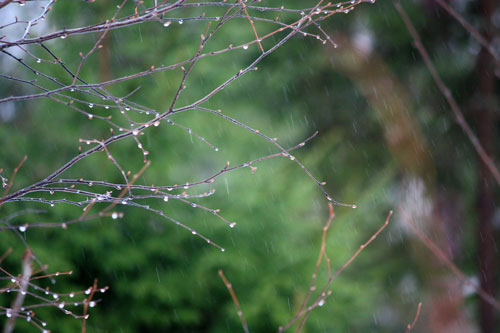
“This spring was really rainy. You hated the rain, but look how beautiful and soft it can be!”
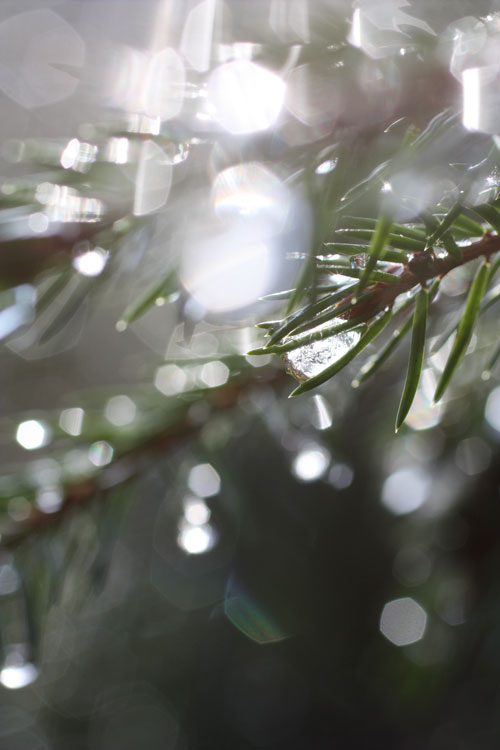
“And you must remember this magical morning, when the rain drops had frozen and it was like millions of diamonds were set on the trees!”
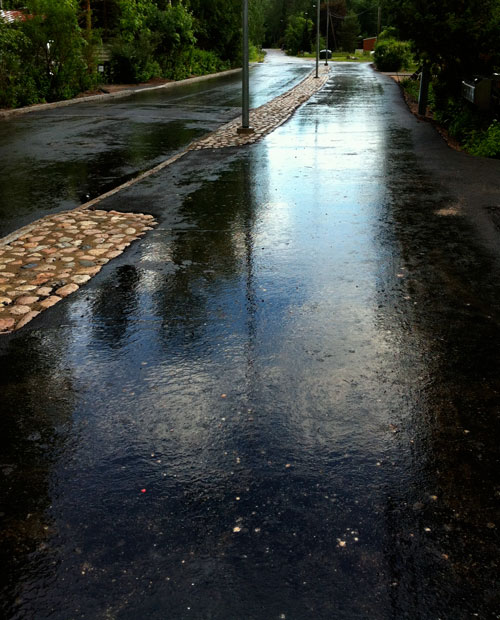
“When we walked home one afternoon, it was mesmerising to see the sky refelecting from the fresh asphalt. In the painting, the water creates wonders too. It makes the watercolors show their true beauty.”
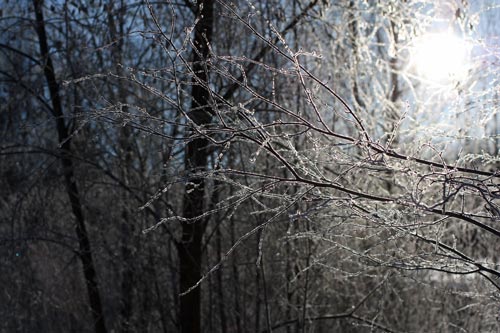
“I always want to photograph this, when in March, the snow and light interact with each other. The snow is frozen water, did you know that?”
“Of course I knew that! Ok, you proved your point. If you could always present things as systematically as you did here, we would not have any problems, you know.”
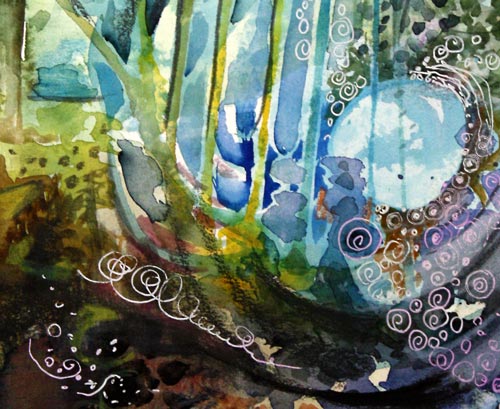
– “I need a nap today since it’s so tiring to explain big things, like art, to you.”
– “I thought I was able to fire you up to get the blog post done! Go ahead and take the nap, meanwhile I can sort out and sharpen your colored pencils!”
Have Fun with Watercolors – Buy Watercolor 101 for Intuitive Painting